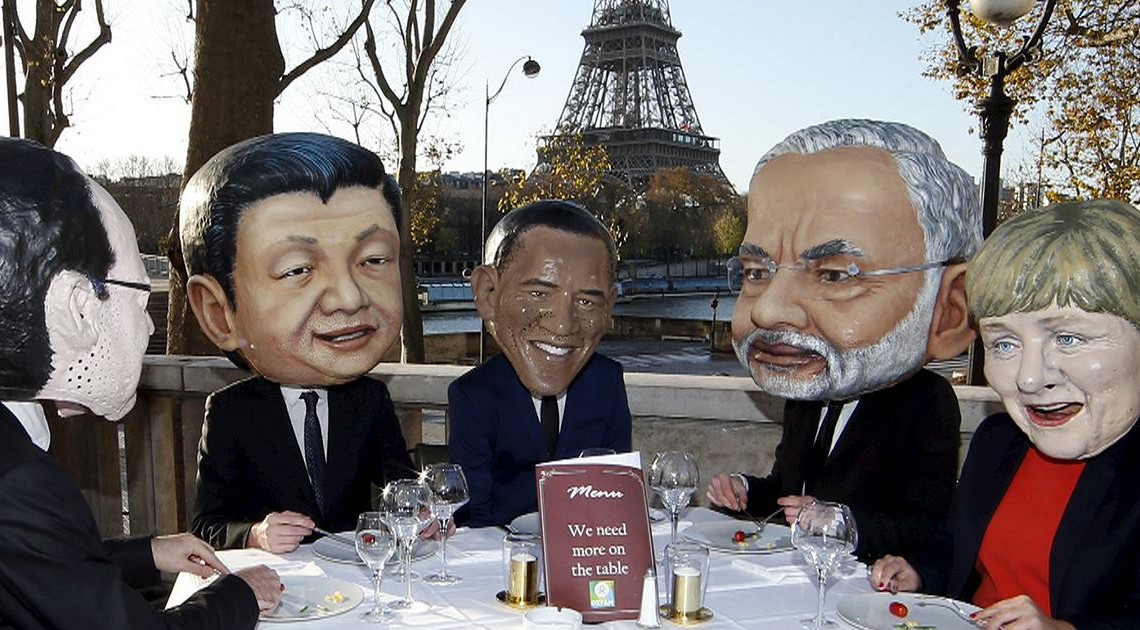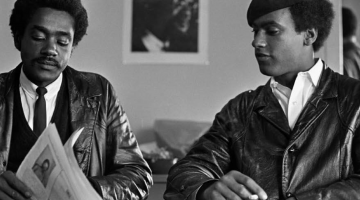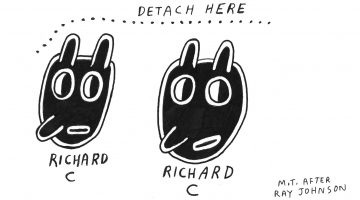Every time we breathe, we pull the world into our bodies: water vapor and oxygen and carbon and particulate matter and aerosols. We become the outside through our breath, our food, and our porous skin. We are composed of what surrounds us. We have come into existence with and because of so many others, from carbon to microbes to dogs. And all these creatures and rocks and air molecules and water all exist together, with each other, for each other. To be a human means to be the land and water and air of our surroundings. We are the outside. We are our environment. We are losing, with the increase in aromatic hydrocarbons and methane and carbon, the animals and plants and air and water that compose us. In this time of loss, we need to imagine.
The COP 21 agreement in Paris was, it is said, a victory. An agreement was reached. A political process succeeded. I do not want to diminish these things. They are important. But what went mostly unreported in the barrage of media coverage and the political rhetoric after Paris was the predicted effects on the air and the water and the land that is us. This air and this water and this land will not exist in the temperatures that we are headed towards, even if every one of those signatory states keeps to the agreement. Humans, in the entire history of our species, have never lived in such a warm climate. These temperatures are biologically unprecedented. And, if all goes well, if every country keeps to their nonbinding agreements, we will experience temperatures well above the agreed upon “safe” level of 2 degree Celsius warming by 2100. “As early as the third page of the draft agreement is the acknowledgment that its CO2 target won’t keep the global temperate rise below 2 deg C, the level that was once set as the critical safe limit,”2 write the signatories of an open letter signed by scientists around the globe. Michael Gerrard, a climate change lawyer and the Chair of Columbia University’s Earth Institute, anticipates that the Paris agreement will leave us in a world about 3.5C (6.3F) warmer by the end of the century.3
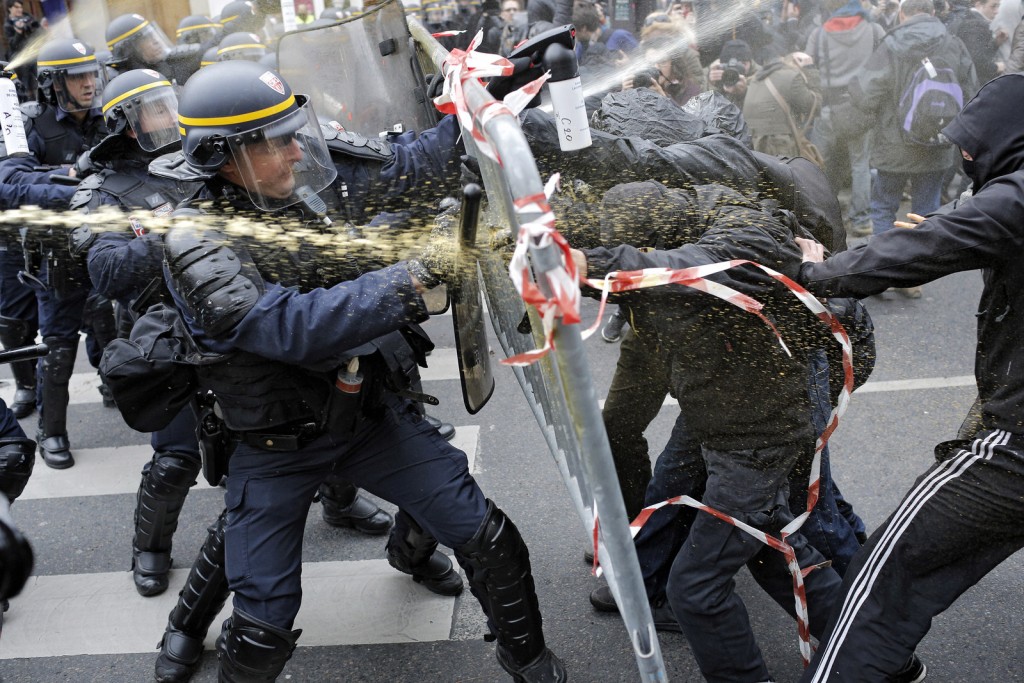
Protesters during the COP21 Summit in Paris, France, 2016. Courtesy of the Internet.
When the low-lying island nations say that a rise of global temperature of 2 degrees Celsius amounts to genocide, they are right. The New York State legislature estimates that there is a 10 percent chance that the oceans will be six feet higher than they are today by 2100. This means that these nations would be completely submerged. It is possible that the people of these islands might be able to leave their homes. They might find refuge elsewhere. But they will not be the same. Literally. They will not be able to breathe in the air and the salt and the water of their island. Their bodies will not be composed of the same molecules, their organs and receptors and sense of self, will all begin to change. It is possible that these epigenetic changes, changes induced by the environment that affect the genomic expression in the body, may be passed on to their descendants. Whole ways of life, of communities and ways of being human, both biologically and culturally, will be transformed.
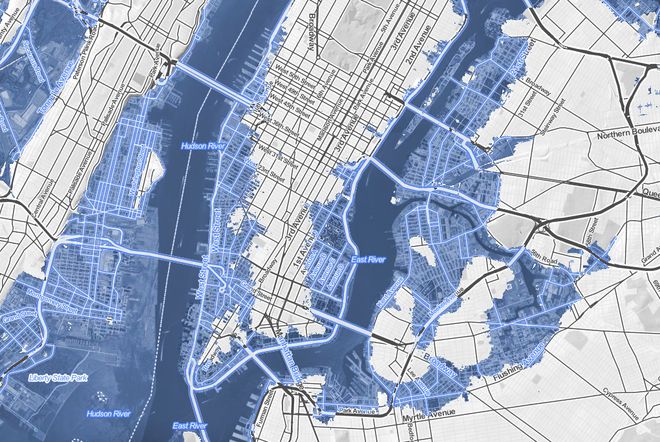
New York with a 10 foot rise in sea level. Visualizations by Stamen Design in collaboration with Climate Central and New American Media.
The failure of our political leaders to properly come to terms with climate change and take the radical and necessary actions to drastically reduce fossil fuel emissions means cultural genocide, not just for the people of low-lying islands, but for South Florida and sub-Saharan Africa and the Arctic—where temperatures are rising faster than anywhere else on Earth. Not only does this mean that vast geographical regions will be completely unrecognizable, but also the multiple entangled relationships between the plants, animals and people who inhabit them. It means the end of multiple cultures, cultures that have grown out of and in response to specific environments.
The world will not end in 2100: the end point at which our political imaginations seem to fail and our data seems to evaporate. Temperatures—due to multiple feedback loops built into atmospheric systems—will continue to rise after 2100. So when we speak of a global rise of temperature by 2 degrees Celsius, we are only speaking of the lifetimes of those living now, or those just about to be born. The generations that come after will live in an even hotter world. But worlds will end in 2100 if we do not take more drastic action. We must radically change our way of life to prioritize relations over commerce, and locality over universality. The worlds that have been built through the collaboration of people and land and air and water and animals and microbes cannot be disentangled. As useful as it is to employ abstractions and argue about numbers and statistics, safe levels of carbon, and what it will take to “maintain our way of life,” we are actually gambling with so many worlds.4
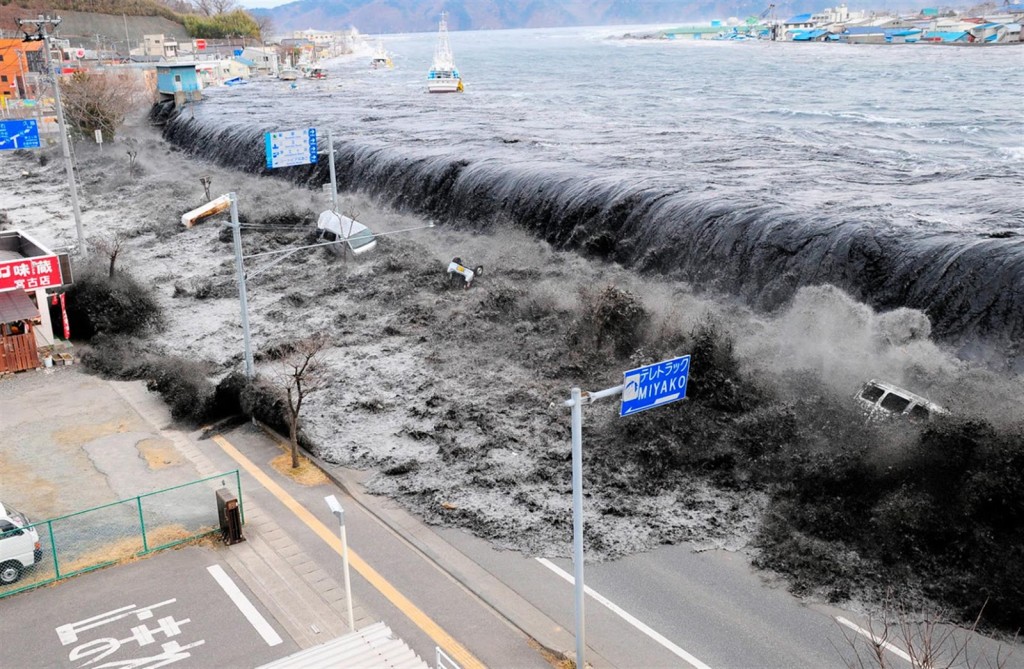
The city of Miyako from the Heigawa estuary in Iwate Prefecture after a 8.9 earthquake struck the area in March 11, 2011. Courtesy of the Internet.
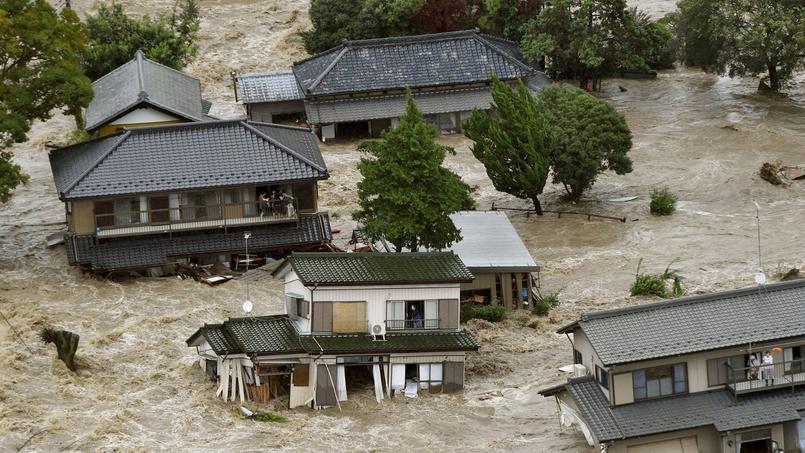
Flooding by the Kinugawa river, caused by typhoon Etau, in Joso, Ibaraki prefecture, Japan, Sept. 10, 2015. Courtesy of the Internet.
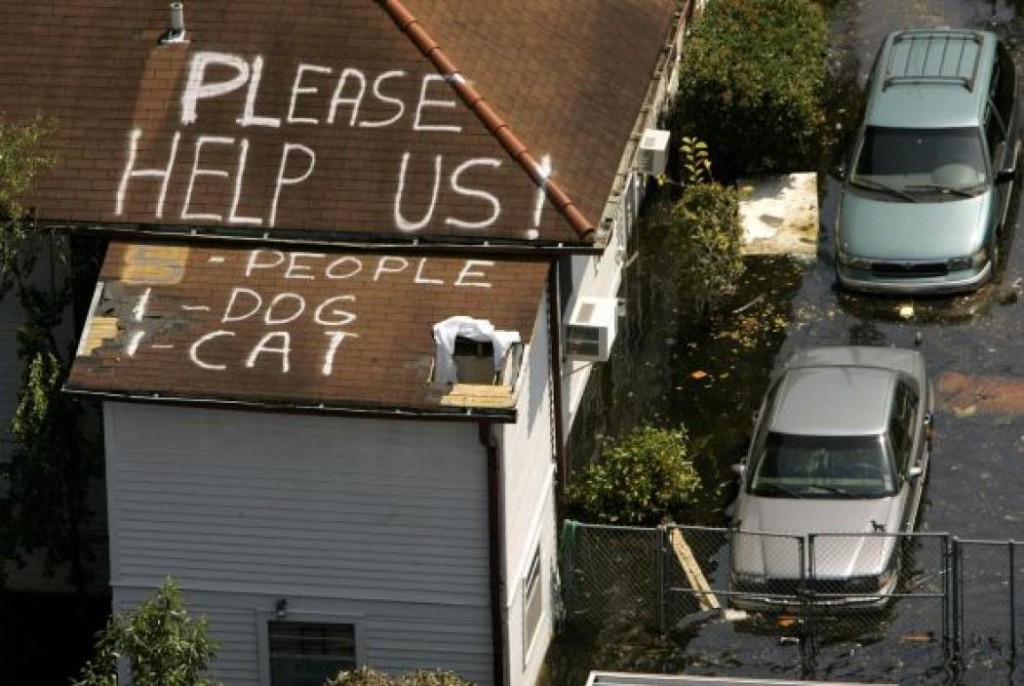
New Orleans After Katrina. Courtesy of the Internet.
And it is naïve to think that the carbon will simply obey our desires. Or, to believe that political will and negotiation are enough to stop runaway global warming coupled with desertification, ocean acidification, and the largest mass extinction event since the end of the dinosaurs. We cannot trade or numerize or rationalize or render abstract the worlds we are birthed from and are indebted to. The environment is not like the economy. We cannot simply print more air or revalue species stocks. We are so immersed in economic logic, the logic of trade and abstraction, that we forget our relations. We are now breathing in the remains of those dinosaurs that haunt our imaginations, foreshadowing the fate of countless species. As Thom van Dooren has written so beautifully, the loss of a species is the loss of thousands of years of accumulated knowledge. He states, “it is clear that this thing we call a ‘species’ is an incredible achievement . . . We often do not appreciate—and perhaps we cannot fully grasp—the immensity of this intergenerational work: the skill, commitment, cooperation, and hard work, alongside serendipity, that are required in each generation to carry the species through.”5 The development of a species is also the development of certain kinds of imaginaries, of spaces of imagination. In the midst of this destruction, holding onto to creativity seems vital.
Artistic work is one small space for re-imagining the world through loss, beyond loss, and into a future radically different from the present that we now occupy. As David Garneau says, “What art does do—and what is difficult to measure—is that it changes our individual and collective imaginaries by particles, and these new pictures of the world can influence our behavior.”6 One of these particles is offered by Amy Balkin’s work Public Smog (2004-2012). The piece proposes listing the atmosphere as a UNESCO World Heritage Site. As such, the atmosphere would have to be protected with the same degree of stringency that a public building, monument or park would be. Balkin calls attention to the fact that the atmosphere is being re-shaped by advanced petrocapitalism under the auspices of “humanity,” and acknowledges that the atmosphere is indeed the legacy of some humans. The piece also simultaneously asserts the ways in which the atmosphere should be regarded as a commons, a commons we all rely upon, and one that needs to be maintained within specific parameters in order for human existence to continue. Or, as Eyal Weizman has recently suggested, we need to decolonize the atmosphere.7
This process of decolonization might not be what we expect. As Kim TallBear recently stated, some of what might look like devastation to white bourgeois settler-colonial eyes, might actually be revitalization.8 At a recent talk at the University of Alberta, TallBear described a devastating flood in her hometown on the Minnesota, South Dakota border that caused so much damage, the farmland had to be abandoned. This meant that the wetlands returned, accompanied by birds and other wildlife. It wasn’t until this moment of return that she fully comprehended the damage of European agriculture on that land. 9 In the force and upheaval of the changes to come, there might be more possibilities like this for emergent ecologies within what Anna Tsing has described as “blasted landscapes.”
It is not just a matter of “fixing” the climate problem, no matter how justifiably tempting this way of thinking may be. It is a matter of reimagining and recreating our relationship with the components of ourselves that are not of ourselves. We must learn to be responsive to land, to water, and to air. Even if our efforts fail, there may be something to be learned by this living with. Living with responsibility. Living with others. Living and composing with the land and water and air, regardless of how it all turns out. There might be something beautiful to be learned, and to be imagined, during our precious time on earth. As the RAQS Media Collective, a group of politically-engaged interdisciplinary artists from India, have said so eloquently,
“Without a recalibration of the senses, at the level of our global species-being, without at least half a conversation to understand, and then attenuate and nuance our desires and needs, we cannot conceive of another mode of production, another set of social relations, another ethic of husbandry between ourselves and the earth.
That is why we send pictures from deserts and write words on water, that is why we make earthworks that stand on the landscape of the mind. That is why we listen to the whispers of an eccentric planet. So that it can listen to us in turn, and keep wanting us, and our children, and their children, around.
The world is all, that is the case.”10
